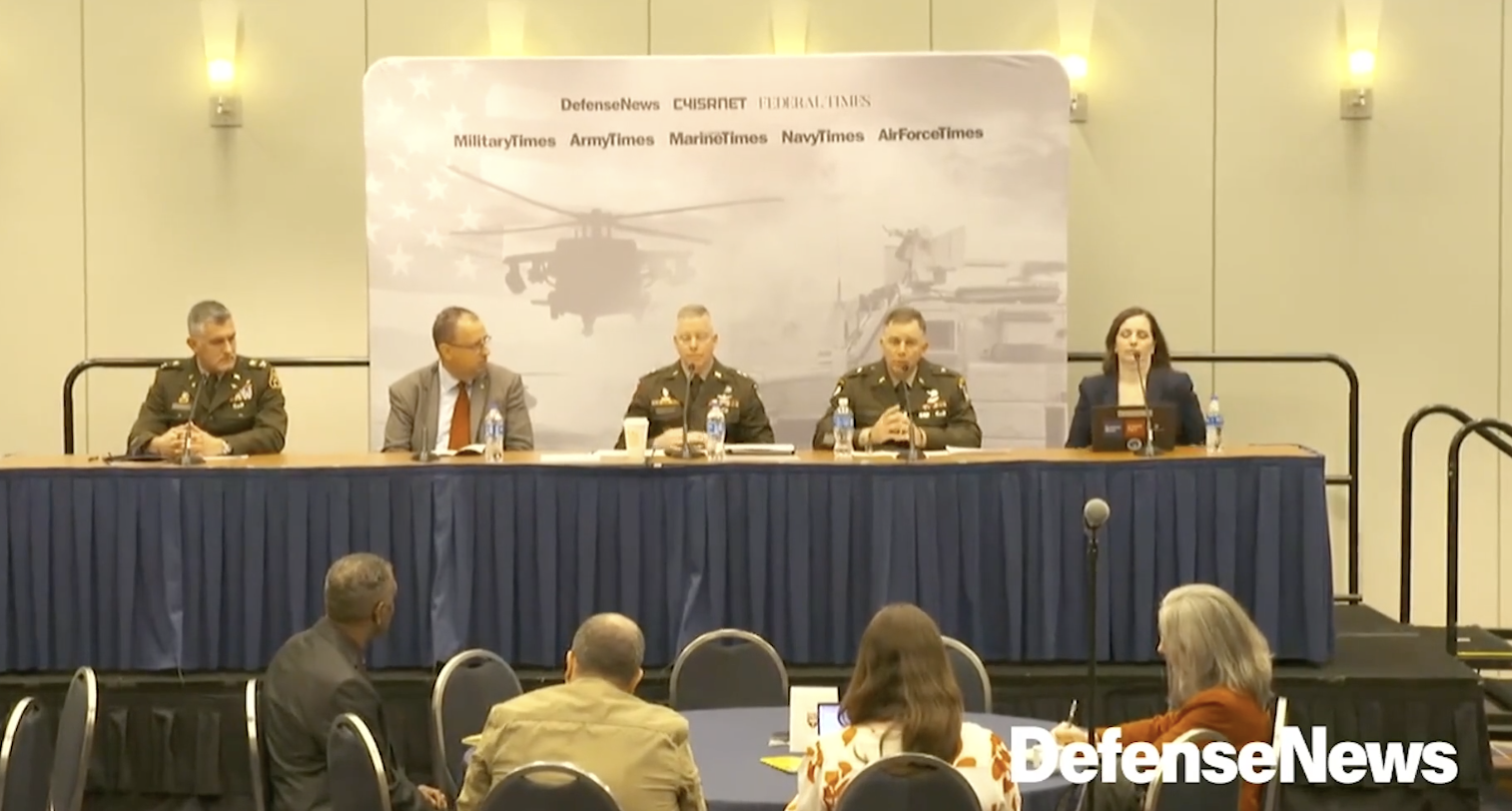By Robbin Laird
The Future Long-Range Assault Aircraft (FLRAA) or the Army’s new tiltrotor aircraft is being designed to operate in a new world of combat, namely one in which autonomous systems will become significant players.
I would argue indeed that when introducing new manned systems now and in the future, it is increasingly important to do so with consideration of how they can work offensive and defensive operations in a world where autonomous systems will become ever more prevalent and prominent.
What is impressive about the Army’s standup of their new tiltrotor aircraft is how they are doing so with core consideration of how the concepts of operations of assault operations will change with the combined arms approach which is inherent in working with and defending against autonomous systems.
A panel held at the recent Association of the United States Army (AUSA) convention held in Washington DC. discussed the way ahead with FLRAA.
This panel was hosted by Defense News which provided a video of the panel which provides readers the opportunity to watch the discussion by senior Army leaders.
The members of the panel were:
- Major General Michael McCurry: Chief of Staff Futures Command
- Brigadier General Cain Baker: Director of Future Vertical Lift Cross-Functional Team
- Colonel Jeffrey Poquette: Project Manager for the Future Long-Range Assault Aircraft (FLRAA)
- Dr. James Kirsch: Director of Combat Capabilities Expand Aviation and Missile Center
The panel started with a discussion of the changing military context into which the FLRAA is being introduced. The conflict in Ukraine highlights the rapid pace of technological advancement and the need for agile and adaptable military capabilities. This necessitates a shift away from traditional platform-centric thinking towards a system-of-systems approach, prioritizing formations of capabilities.
The FLRAA program is a significant investment aimed at transforming Army aviation. It prioritizes speed and range and leveraging digital engineering for rapid design and development. Soldier feedback is actively integrated into the design process, ensuring the aircraft meets operational needs.
Yet at the same time, the Army recognizes the crucial role of unmanned and autonomous systems, particularly launched effects (ULEs), in future warfare. These systems enhance situational awareness, provide stand-off capabilities, and contribute to holistic team survivability. Ongoing experimentation and exercises like the Army Futures Command’s (AFC) Future Vertical Lift (FVL) Cross-Functional Team (CFT)’s Experimental Demonstration Gateway Event (EDGE) and Project Convergence are informing doctrine, organization, and training for effective ULE employment.
But how to do both, launch a new manned platform and integrate ULEs?
According to Major General Michael McCurry: “We aim to capitalize on the strengths of both without sacrificing humans for first contact, focusing on what machines can do best and what humans do best. The most important letter in HMI is the “F” for formation. We’re focused on formations of capability, which is a bit different from others around the world that want to employ a singular material item on the battlefield. We’re interested in building formations and capabilities at echelon. A great mentor, retired General David Perkins, once told me to quit focusing on one thing and see how it fits into the bigger picture. So, this formation-based approach is critical.”
In other words, the focus is upon leveraging what a new platform like the FLRAA can provide, namely speed and range, but working in what I have called combat clusters to leverage what autonomous systems can deliver, or in the words of the panel how ULE employment working with FLRAA shapes the concepts of operations of operational units in the future force.
As Colonel Jeffrey Poquette underscored: “Two things about FLRAA that are most important to the Army are: go twice as far, twice as fast. We beat that drum all the time. The other part that General Baker highlighted is that if we get those two things right, there’s no doubt in my mind that this transformational capability will live on for many decades to come.”
But how to design a platform which has such inherent capabilities but one able to adopt to a world where autonomous systems will be increasingly significant?
I will return to the panel discussion to address this question in my next article.


